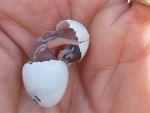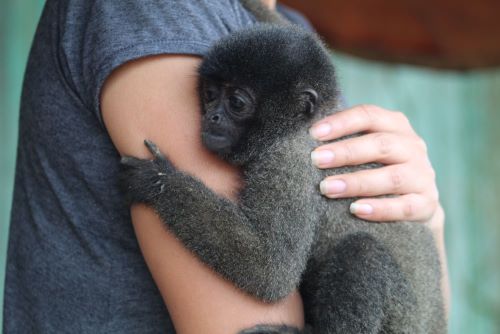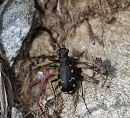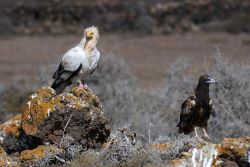Firebreaks are linear strips that dissect the landscape and prevent or mitigate the spread of wildfires in Mediterranean landscapes. However, few studies have addressed their potential effect on insect behavior. The lack of traffic and other human activities in firebreaks makes them suitable for testing the sole effect of physical habitat disruption on animal movement. Main objective was to evaluate whether the pattern of movement by a butterfly species was affected by this landscape element. Flight trajectories of the lycaenid butterfly Plebejus argus were reconstructed within and around one firebreak using visual and GPS tracking in Doñana National Park (southern Spain). Butterflies that were active at the firebreak boundary often refused to enter the firebreak and, when they did, most individuals returned before reaching the opposite side. Inside the firebreak faster and straighter trajectories were recorded than in adjacent scrubland areas. Butterflies that crossed the firebreak headed the most favorable direction to minimize the time spent within the habitat discontinuity. At the landscape scale, firebreak density increased in areas where P. argus habitat was more fragmented and had lower quality. In other studies, when firebreaks are mowed instead of ploughed, they appeared to be beneficial for butterflies. In contrast, in Doñana, barren firebreaks do not provide any valuable resource for P. argus and its environmental conditions probably entail considerable physiological stress. In sum, a narrow, open linear element lacking any human activity induces a marked change in the movement behavior of a butterfly species, with potential consequences on population dynamics at the landscape scale. Therefore, firebreaks used for protecting Mediterranean landscapes could have side effects on animal populations other than localized habitat loss due to mere vegetation removal. informacion[at]ebd.csic.es: Fernández et al (2019) Firebreaks as a barrier to movement: the case of a butterfly in a Mediterranean landscape. J Insect Conserv DOI 10.1007/s10841-019-00175-5
https://link.springer.com/article/10.1007%2Fs10841-019-00175-5#Abs1

 Las altas temperaturas están provocando que las lagunas y las marismas de Doñana pierdan agua rápidamente
Las altas temperaturas están provocando que las lagunas y las marismas de Doñana pierdan agua rápidamente



